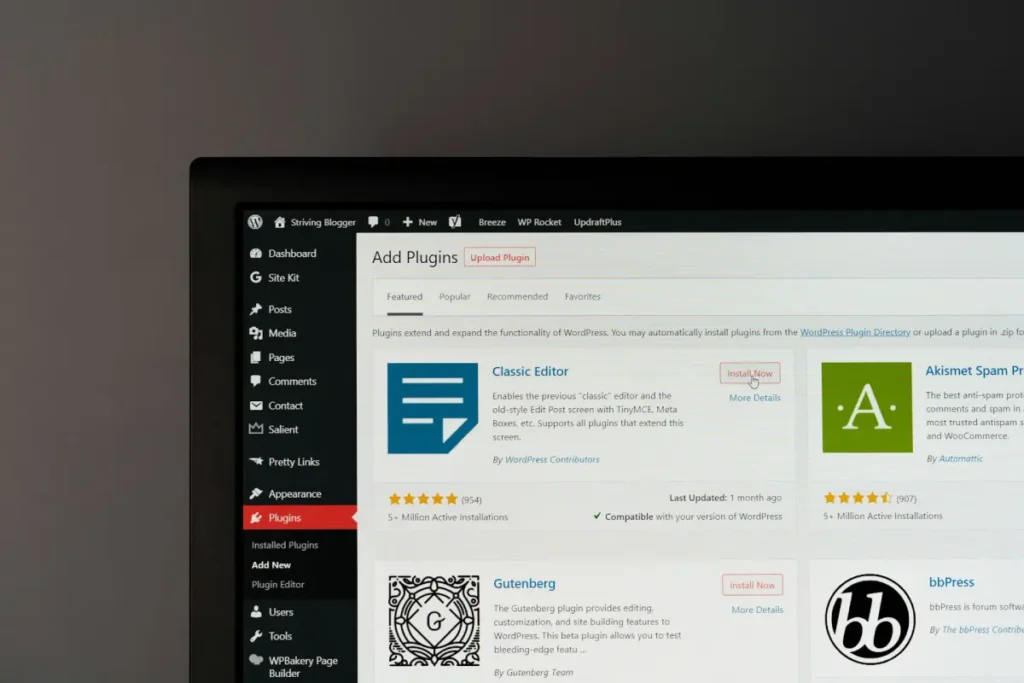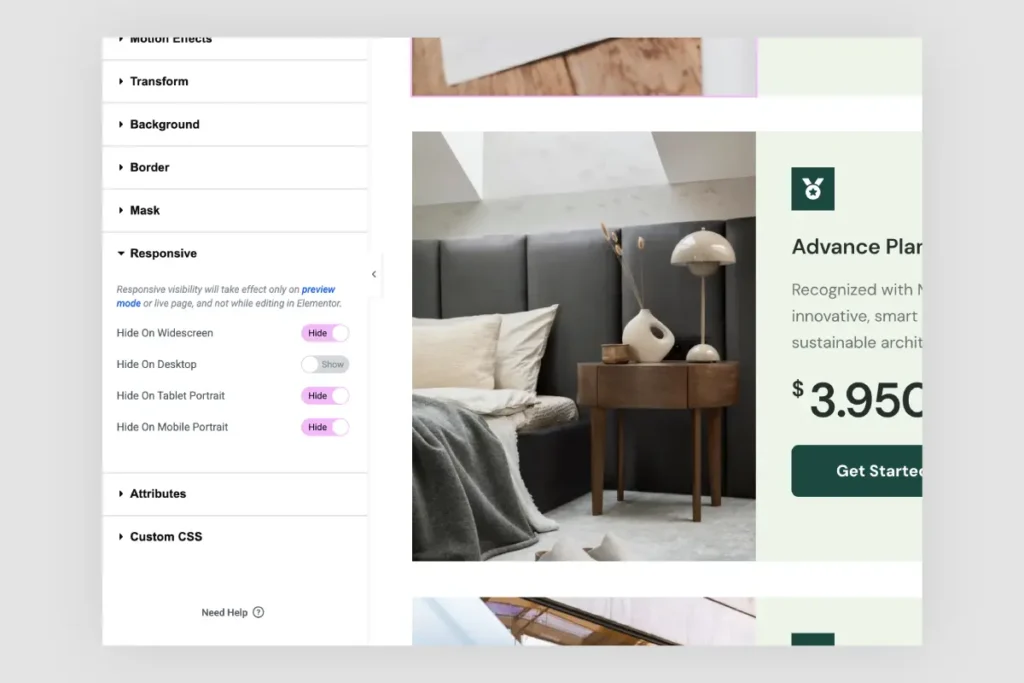Elementor has revolutionized the way WordPress websites are built. With its intuitive drag-and-drop interface, visual design capabilities, and robust features, even beginners can create stunning websites—no coding required.
But with great power comes great responsibility. Many Elementor users unknowingly make mistakes that negatively impact performance, SEO, and user experience (UX). These oversights can result in slow-loading pages, inconsistent design, and low search rankings—undoing all your hard work.
In this comprehensive guide, we’ll cover 12 of the most common Elementor mistakes (especially among beginners) and show you exactly how to fix them to create a faster, cleaner, and more effective website.
1. Not Designing for Mobile First

The Mistake
Most users design for desktop first, then tweak mobile views as an afterthought. This leads to awkward layouts, cut-off text, and hard-to-read content on smartphones.
Why It Hurts
- Google uses mobile-first indexing, meaning your mobile site is what Google primarily evaluates.
- Mobile devices account for 60–70% of web traffic, so a poor mobile experience drives users away.
How to Fix It
- Use Elementor’s Responsive Mode (click the device icons in the bottom toolbar).
- Customize font sizes, column stacking, margins, and padding for mobile and tablet.
- Use visibility settings to hide non-essential elements on smaller devices.
Tip: Test your mobile design on real devices, not just in the editor preview.
2. Overusing Widgets and Add-ons

The Mistake
Installing too many third-party Elementor add-ons or widgets seems convenient but can bloat your site.
The Impact
- Increased page load time
- Confusing editor interface
- Higher chances of plugin conflicts
How to Fix It
- Stick to core Elementor widgets or reliable plugins like Elementor Pro, Essential Addons, or Crocoblock.
- Use a lightweight theme like Hello Elementor, Astra, or GeneratePress.
- Regularly audit and deactivate unused plugins or widget packs.
3. Skipping Performance Optimization

The Mistake
Focusing only on design and ignoring website performance.
Why It Matters
- Slow websites kill conversions.
- Google uses page speed as a ranking factor.
How to Fix It
- Compress images using TinyPNG, ShortPixel, or Smush.
- Use caching plugins like WP Rocket, LiteSpeed Cache, or Autoptimize.
- Enable a Content Delivery Network (CDN) like Cloudflare.
- Minimize the use of animations and large video backgrounds.
💡 Test your site with Google PageSpeed Insights, GTmetrix, or Pingdom Tools.
4. Ignoring Global Styles
The Mistake
Manually styling each widget or section instead of using global design settings.
The Problem
- Design becomes inconsistent across pages.
- Making site-wide changes becomes a nightmare.
How to Fix It
- Navigate to Site Settings > Global Fonts & Colors in Elementor.
- Define brand colors, font styles, button appearances, and spacing.
- Use Global Widgets for repeatable sections like headers, footers, and CTAs.
5. Skipping SEO Essentials

The Mistake
Creating beautiful pages but forgetting about search engine optimization (SEO).
Why It Matters
- Without proper SEO, your site won’t rank—even if it looks amazing.
- SEO drives long-term organic traffic.
How to Fix It
- Use 1 H1 tag per page, then structure content with H2s, H3s.
- Install an SEO plugin like Rank Math or Yoast SEO to manage metadata and schema.
- Always add alt text to images and use descriptive filenames.
- Avoid keyword stuffing—write for humans first, then optimize for search.
6. Disregarding Accessibility (a11y)

The Mistake
Many Elementor sites ignore accessibility best practices, leaving out users with disabilities.
The Risk
- Loss of a significant portion of your audience.
- Possible legal risk (ADA or WCAG non-compliance in some regions).
How to Fix It
- Ensure proper contrast ratios for readability. Use tools like WebAIM Contrast Checker.
- Add alt text to all meaningful images.
- Use semantic HTML tags and ARIA labels for screen readers.
- Avoid using text inside images unless it’s decorative.
7. Forgetting to Clear Cache After Edits
The Mistake
You make updates in Elementor, but they don’t show on the live site.
Why It Happens
- Changes are blocked by cached versions of your site.
How to Fix It
- Clear cache from your browser, cache plugin, and hosting platform.
- If your host uses server-level caching (e.g., SiteGround, Kinsta), clear it too.
- Work in a staging environment to avoid live-site disruptions.
8. Over-Hiding Elements Instead of Removing Them

The Mistake
Using Elementor’s “hide on mobile/tablet” feature, which hides visually but still loads content in the background.
Why It’s a Problem
- Hidden elements still load and impact performance.
- Your page may have excessive HTML, slowing down the DOM.
How to Fix It
- Use Display Conditions (Elementor Pro) or custom code to exclude elements entirely.
- Alternatively, create mobile-specific sections that load conditionally.
9. Not Running A/B Tests for Conversions
The Mistake
Publishing designs without testing alternatives.
Missed Opportunity
- You don’t know what converts better: “Get Started” or “Try for Free”?
How to Fix It
- Use Elementor A/B Tests (Elementor Pro).
- Test headlines, CTA button text/colors, layout changes, and images.
- Run tests long enough (minimum 1,000 sessions) for statistically significant data.
10. Using Too Many Plugins
The Mistake
Adding plugin after plugin for small features.
Risk
- Site bloat and slower performance
- More plugins = more chances for security vulnerabilities or conflicts
How to Fix It
- Limit your site to 10–15 active plugins, max.
- Regularly review your plugin list and remove what’s unnecessary.
- Choose plugins that handle multiple tasks (e.g., Rank Math covers SEO + schema + redirection).
11. Weak Navigation and Call-To-Actions
The Mistake
Cluttered menus and vague CTAs confuse users.
Why It Matters
- Poor navigation leads to higher bounce rates.
- Weak CTAs fail to convert.
How to Fix It
- Limit your main menu to 5–7 essential links.
- Use strong, action-driven CTA buttons: e.g., “Download Now,” “Book Your Free Call.”
- Ensure CTAs are above the fold and visible on all screen sizes.
- Use contrasting button colors to draw attention.
12. Uploading Unoptimized Images
The Mistake
Uploading 2MB+ images directly to your page.
The Result
- Slow page load
- Poor user experience, especially on mobile
How to Fix It
- Resize large images before upload (max width: 1200–1500px for full-width, 600–800px for inline).
- Use WebP format when supported.
- Enable lazy loading and compression using tools like ShortPixel, Imagify, or Smush.

Final Checklist: Elementor Best Practices Summary
Before you launch your Elementor website, run through this pre-launch checklist:
- Is your site mobile-friendly and responsive?
- Are images compressed and properly sized?
- Are global fonts, colors, and spacing used consistently?
- Is on-page SEO implemented (headings, alt text, meta tags)?
- Have you reviewed accessibility for better inclusivity?
- Are unused plugins and widgets removed?
- Is your site speed optimized (caching, CDN, minification)?
- Are CTAs and menus intuitive and conversion-focused?
- Are hidden elements properly excluded from the DOM?
- Have you tested different variations using A/B testing?
Final Thoughts
Elementor is a powerful tool—but like any tool, it works best when used with intention. By avoiding these 12 common Elementor mistakes, you’ll not only improve performance and search rankings but also provide a cleaner, more engaging experience for your visitors.
Whether you’re a freelancer, agency, or WordPress enthusiast, taking the time to apply these fixes can dramatically improve your website’s success.
Start optimizing today—your users (and Google) will thank you.
